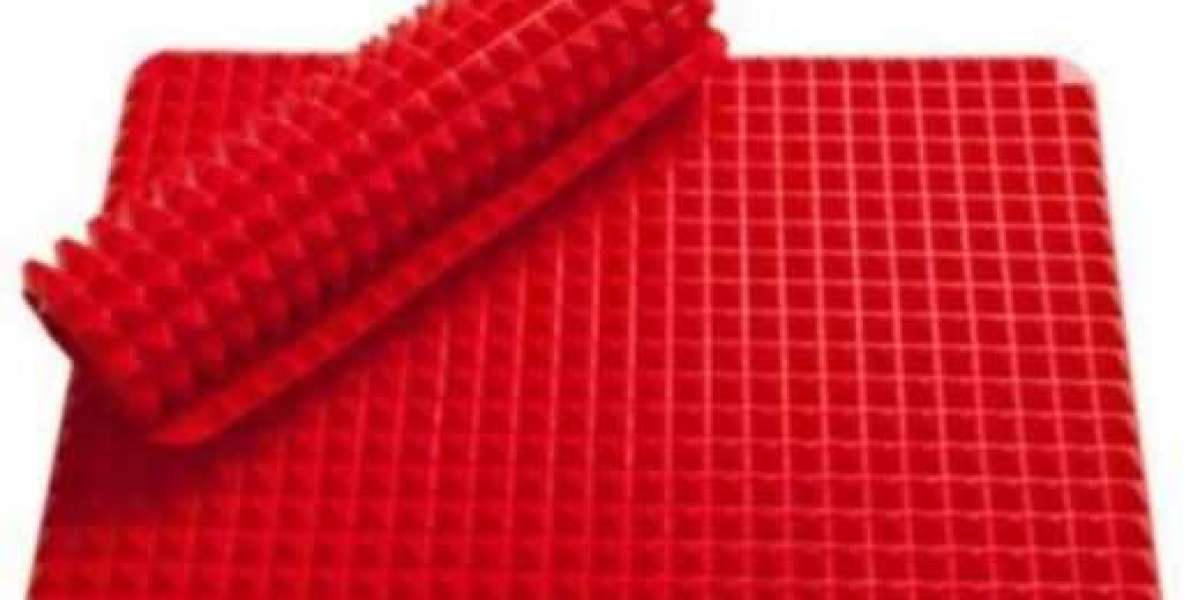Baking enthusiasts often seek tools that make their process smoother and cleaner. One such popular tool is the silicone mat — a reusable, non-stick surface designed for baking and cooking. But many people wonder: are silicone mats truly safe for baking? Let’s explore this topic in detail, breaking down the materials, safety concerns, and benefits.
What Is a Silicone Mat?
A silicone mat is a flexible baking sheet made from food-grade silicone, sometimes reinforced with fiberglass mesh. It provides a non-stick surface, ideal for baking cookies, pastries, and even roasting vegetables. Instead of using parchment paper or greasing pans, you can place the silicone mat directly on the baking tray.
These mats are known for their durability, heat resistance, and easy cleanup. But beyond convenience, safety is a key factor people consider before using them.
Is Silicone a Safe Material for Baking?
Food-grade silicone is generally considered safe for baking and cooking. It is a synthetic rubber material that is non-toxic, BPA-free, and resistant to extreme temperatures. Most silicone mats can withstand temperatures from -40°F to 480°F (or even higher, depending on the brand).
Regulatory bodies like the FDA and European food safety authorities approve food-grade silicone for contact with food. This means, when properly used, a silicone mat should not release harmful chemicals or alter the taste of your baked goods.
However, it’s crucial to check product labels. Only buy mats labeled as “food-grade silicone.” Low-quality or non-certified mats may include fillers or additives that could compromise safety.
Heat Resistance and Baking Temperatures
One of the major concerns bakers have is whether silicone mats can handle high oven temperatures. Fortunately, silicone is designed to withstand typical baking temperatures. Most recipes call for oven settings between 325°F and 425°F, which are well within the safe range for a quality silicone mat.
However, you should always follow the manufacturer’s temperature guidelines. Overheating a mat beyond its recommended limit may cause it to degrade or emit odors. Additionally, avoid exposing mats to direct flame or broiler settings, as silicone is not flame-resistant.
Are There Any Health Risks?
Research indicates that food-grade silicone is stable and does not leach harmful substances under normal cooking conditions. Unlike plastic, it doesn’t contain BPA, phthalates, or other chemicals linked to health concerns.
Still, some people notice a slight smell when using a new silicone mat for the first few times. This is typically harmless and usually disappears after a few uses. To be safe, you can wash the mat thoroughly before its first use and bake it empty at a moderate temperature to help “off-gas” any factory odors.
If a mat shows signs of wear — such as cracks, discoloration, or stickiness — it’s best to replace it. Damaged mats may no longer perform well or meet safety standards.
Advantages of Using a Silicone Mat
Using a silicone mat offers many benefits beyond safety:
- Non-Stick Surface: Foods release easily without the need for extra oils or sprays.
- Reusable: Unlike parchment paper or foil, mats can be used hundreds of times, reducing waste.
- Even Heat Distribution: Mats help distribute heat evenly, leading to better baking results.
- Easy Cleaning: Most mats are dishwasher-safe or can be wiped clean with soap and water.
These advantages make silicone mats an eco-friendly and cost-effective option in the kitchen.
Tips for Safe Silicone Mat Use
To ensure the best experience and safety when using your silicone mat, follow these practical tips:
- Avoid Sharp Tools: Never cut food directly on the mat, as sharp objects can damage the surface.
- Check Temperature Limits: Always stay within the recommended heat range provided by the manufacturer.
- Clean Properly: Avoid harsh scrubbing or abrasive cleaners that could break down the silicone.
- Store Flat or Rolled: Keep mats flat or loosely rolled to prevent creases or folds.
By following these guidelines, you can prolong the life of your mat and maintain its safety over time.
When Should You Replace a Silicone Mat?
Even though silicone mats are durable, they are not indestructible. Over time, frequent use, exposure to high heat, and repeated cleaning can wear them down. Signs that it’s time to replace your silicone mat include:
- Deep cuts or gouges.
- Sticky or tacky surface, even after cleaning.
- Warping or misshaping.
- Persistent off-odors.
Replacing old or damaged mats ensures that your baked goods remain safe and your baking results stay consistent.
Final Thoughts: Are Silicone Mats Worth It?
In summary, silicone mats are safe for baking when used correctly. They are made from food-grade materials, withstand common oven temperatures, and offer multiple benefits for home bakers. Always check product certifications, follow care instructions, and replace mats when they show signs of wear.
If you want a reusable, non-stick, and eco-friendly solution for your baking needs, investing in a quality silicone mat is a smart choice. Not only will it make your baking easier, but it also aligns with sustainable kitchen practices by reducing single-use waste.








